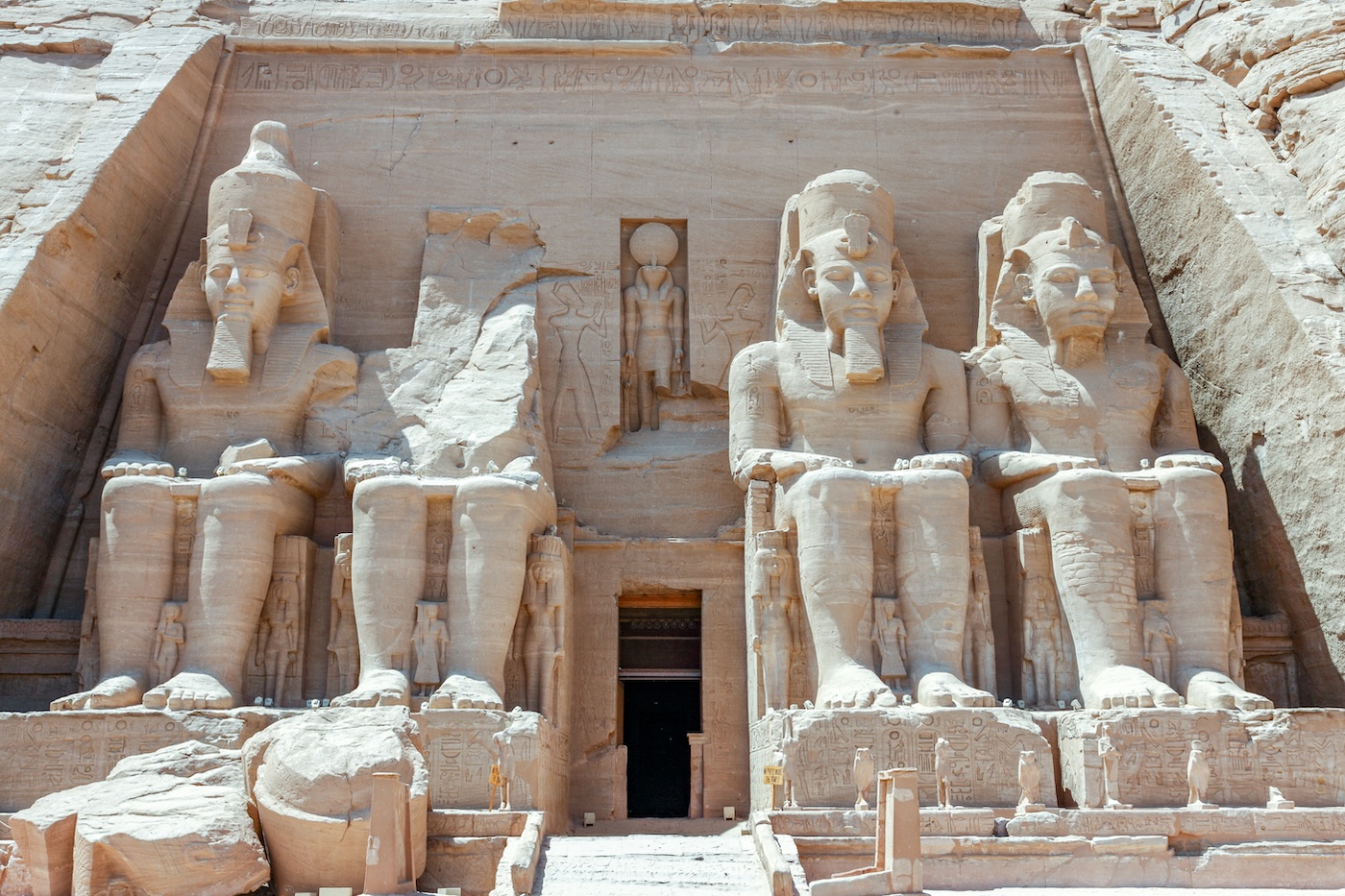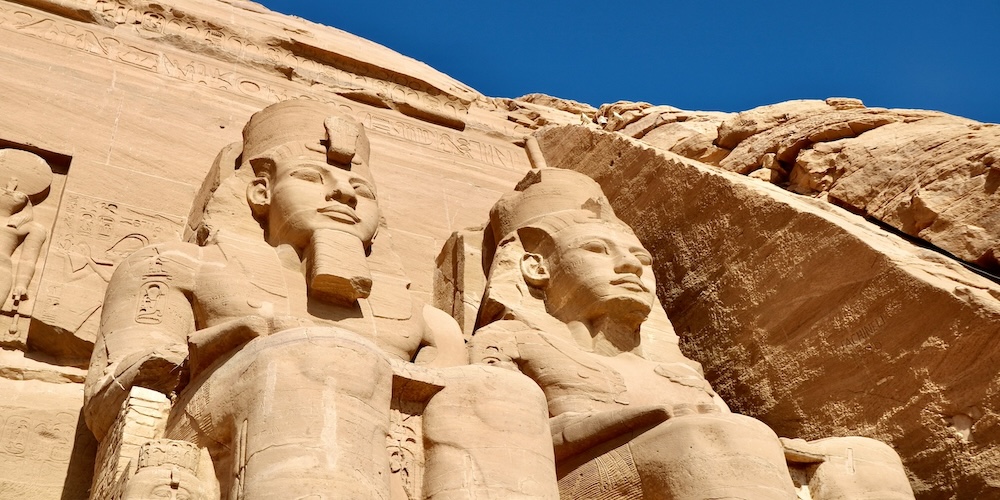
Abu Simbel Temple History Reflecting Ancient Egypt
The Abu Simbel temple history is a remarkable narrative of power, religion, and survival. Constructed by Ramses II in the 13th century BCE, the temples were intended to showcase his dominance and divine status. Carved into sandstone cliffs in Nubia, they served as both a political statement and a spiritual masterpiece, honoring gods like Amun-Re and Re-Horakhty. These temples, aligned with the sun to mark significant events, are marvels of ancient engineering.
The temples’ significance endured even after they fell into disuse, buried under sand for centuries. Rediscovered in 1813, their allure grew as they revealed an extraordinary blend of artistry and devotion. Their significance deepened in the 20th century when the Abu Simbel relocation saved them from being submerged due to the construction of the Aswan High Dam, ensuring their preservation for generations.
Ramses II and the Gods of Abu Simbel
The temples of Abu Simbel reflect Ramses II’s ambition and reverence for the gods. The Great Temple is dedicated to Amun-Re, Re-Horakhty, Ptah, and Ramses himself, presenting the pharaoh as both ruler and deity. Intricately carved statues and wall reliefs illustrate his military victories, particularly the Battle of Kadesh, solidifying his legacy as a warrior king.

Inside the Abu Simbel temple, the sanctuaries house statues of these gods, aligned with celestial phenomena to emphasize their power. Twice a year, sunlight illuminates the inner sanctuary, symbolizing divine approval of Ramses’ reign. The smaller temple, dedicated to Hathor and Queen Nefertari, celebrates love and divinity, a rare honor for a royal consort.
This profound connection between human authority and celestial worship makes Abu Simbel a cornerstone of Egyptian religious history. The temples remain a testimony to how the ancients viewed their rulers as intermediaries between gods and mortals.
The Herculean Effort to Relocate Abu Simbel
The construction of the Aswan High Dam in the 1960s posed a grave threat to the Abu Simbel temples. To prevent their submersion under Lake Nasser, an international campaign led by UNESCO undertook the ambitious task of moving the temples. Known as the Abu Simbel relocation, this project involved dismantling the temples into over 1,000 pieces, each weighing several tons, and reassembling them on higher ground.
The relocation was a race against time, with Lake Nasser’s waters rising rapidly. Engineers built temporary dams, erected infrastructure, and meticulously moved every block to preserve the temples’ integrity and celestial alignment. The project was completed in 1968, hailed as one of the greatest archaeological rescue missions in history.
This monumental effort not only safeguarded the temples but also set a precedent for preserving cultural heritage. Abu Simbel’s survival is a symbol of international collaboration and a commitment to protecting history from modern challenges.
Architectural Brilliance Inside Abu Simbel
The Abu Simbel temple inside reveals a world of artistic and spiritual significance. The Great Temple’s interior walls depict Ramses II’s military triumphs, especially the Battle of Kadesh, while portraying him in the presence of gods. These carvings emphasize his dual role as both ruler and divine entity.
The sanctuaries are designed with extraordinary precision. On two specific dates each year—February 22 and October 22—sunlight illuminates three of the four statues in the inner sanctuary, leaving Ptah, the god of darkness, untouched. This celestial alignment is a testament to the ancient Egyptians’ astronomical knowledge and architectural prowess.

The smaller temple dedicated to Queen Nefertari and Hathor is equally captivating. The walls are adorned with images of the queen participating in religious rituals, elevating her status to that of a goddess. This rare honor highlights the temple’s unique role in celebrating love and divine connection.
Five Lesser-Known Facts About Abu Simbel
- Built for Eternity: The temples were constructed as a lasting tribute to Ramses II’s reign and Egypt’s dominance over Nubia. Their colossal scale reflects this ambition.
- Celestial Precision: The alignment of the Great Temple allows sunlight to illuminate its inner sanctuary twice a year, marking significant dates in Ramses II’s life.
- Rediscovery: Buried under sand for centuries, the temples were uncovered in 1813, reigniting global fascination with ancient Egypt.
- Engineering Marvel: The Abu Simbel relocation involved cutting the temples into pieces and reassembling them on higher ground—a feat of unparalleled engineering.
- Nefertari’s Tribute: The smaller temple honors Hathor and Queen Nefertari, showcasing her unique status as a royal consort depicted as a goddess.
These facts highlight the enduring significance of Abu Simbel, a site that continues to inspire awe and admiration for its historical, artistic, and spiritual depth.
The Rediscovery and Revival of Abu Simbel
Abu Simbel lay hidden beneath the desert sands for centuries, forgotten by time. It was in 1813 when Swiss explorer Johann Ludwig Burckhardt stumbled upon the site, marking the beginning of its modern story. The colossal statues were partially buried, leaving only their heads visible, sparking fascination and curiosity. Over time, archaeologists unveiled the temples, revealing the intricate details and their significance to Ramses II’s reign.
The rediscovery not only brought attention to Abu Simbel’s artistry but also highlighted its strategic location in Nubia, serving as a testament to Egypt’s dominance in the region. As interest grew, the temples became symbols of ancient Egypt’s grandeur, attracting scholars and travelers alike.
In the 20th century, Abu Simbel faced another challenge with the construction of the Aswan High Dam. The threat of submersion under Lake Nasser led to the famous Abu Simbel relocation project. This effort ensured that the temples would remain a beacon of ancient engineering and artistry, preserved for future generations.
